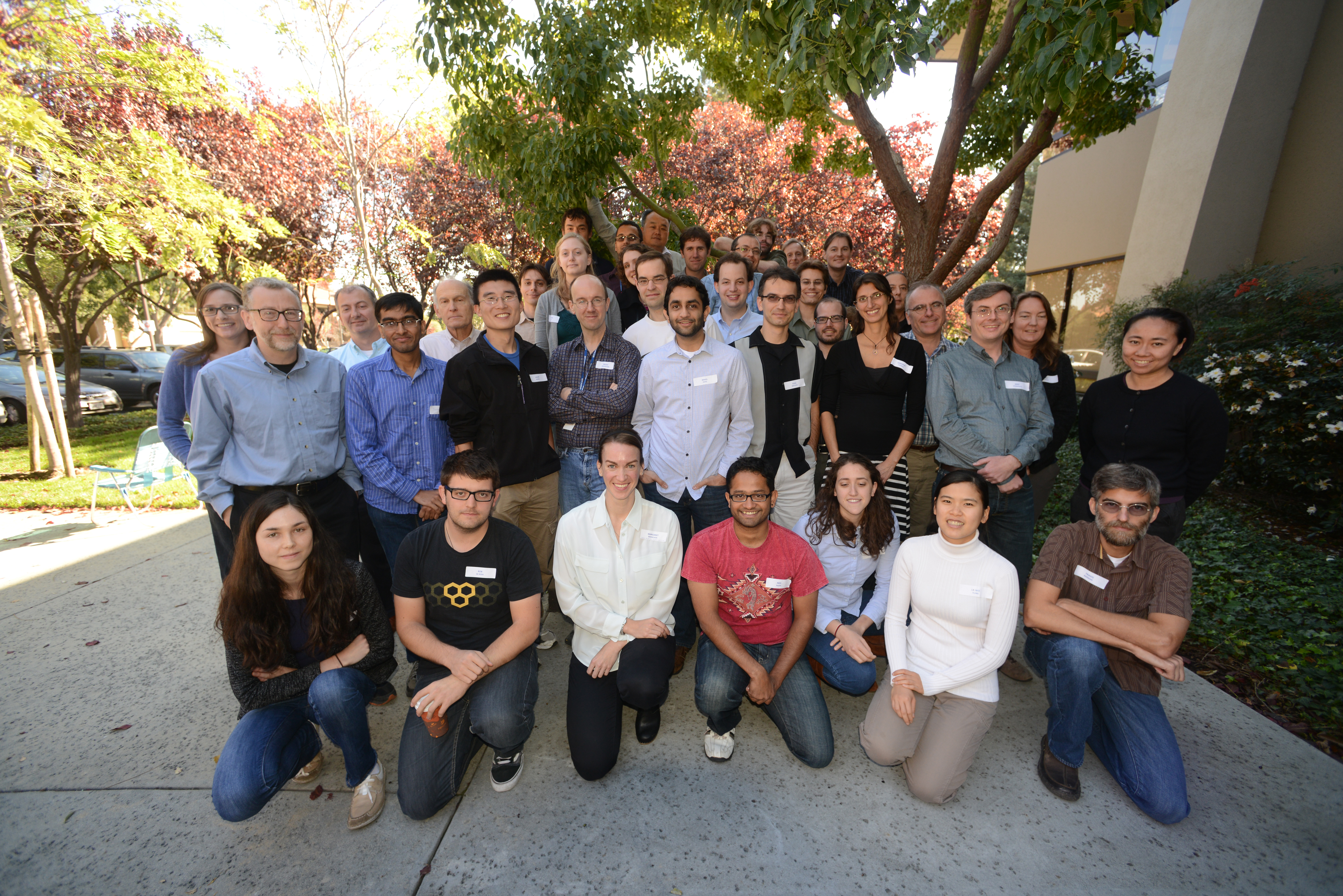Meeting the Team: GPI Science Meeting November 2013

The Next Step in Exoplanetary Science: Imaging New Worlds
December 28, 2013
GPI Technology: Gemini Planet Imager Adaptive Optics uses Boston Micromachines MEMS deformable mirror
February 8, 2014The Gemini Planet Imager (GPI) team held our latest science meeting November 1-2, 2013, right before GPI saw first starlight. The meeting was hosted by the SETI Institute at their office in Mountain View, CA (for those curious, I did not find any signs of aliens there). Continuing with tradition, we took a group picture of the GPI team. You can tell it has grown significantly from the past.
Building an instrument as complex as the Gemini Planet Imager (GPI) and using it to directly image planets outside of our solar system is not an easy task. From constructing the integral field spectrograph that is the “eye” of GPI to writing the algorithms to process the data to modelling the atmospheres of the planets we hope to see, we need a lot of different skillsets. Because it is hard to find all this varied expertise, the GPI team consists of team members from all around the world working at many different institutions. As one can imagine, the spatial separation can make collaboration and coordination hard. Science meetings like this one are really helpful in getting everyone synchronized.
As a graduate student that is just beginning to work on GPI, the science meeting was also a great introduction to the GPI team for me. It was the first time I met in-person my collaborators that I had been emailing or calling for months. I also got to know the rest of the GPI team and for the first time truly appreciated the manpower and expertise necessary to make GPI happen.
At the meeting, team members gave updates on their work so that others can stay updated with the entire GPI collaboration. I learned a lot from these presentations because I had just started working on GPI and really needed an update on everything. We heard about the status of the instrument, current calibration efforts, and the tools we have developed to look at the data. With GPI scheduled to be on sky and looking at astrophysical targets soon, the majority of the meeting was focused on what kind of science GPI could do. Team members presented on the science goals for the upcoming GPI exoplanet campaign and the planning that still needs to be done. Those who are experts in fields such as orbital dynamics or planetary atmospheres gave brief overviews on these topics for those of us not well versed in the science.
My only gripe about the meeting was that it started at 8am (that’s when astronomers go to bed!). But with the help of leftover Halloween candy which was in abundant supply at the meeting, I stayed awake and got excited by work that has been done and will be done on GPI. I can’t wait to see what will happen in GPI’s first year on sky!
Happy New Year!
Jason Wang




